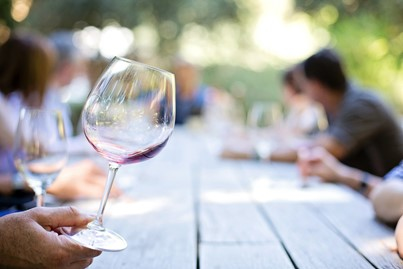Wine Tasting at Home – What You Should Know About Wine Tasting

Home Tasting is Fine for Wine
Wine is an international perennial favorite of casual drinkers and dedicated aficionados alike. Wine, not unlike whisky or coffee, comes in a galaxy of different flavors with a multitude of distinct profiles, and even those who have enjoyed wine for years may not have even scratched the surface of the true breadth of choice. This is why wine tasting is important, and it’s a good reason to host wine tasting at home.
Having your friends and loved ones gather for a wine tasting at home isn’t just a welcome commiseration. It’s also a great way for wine lovers of all palates to exchange ideas and introduce others to flavors of wine they may have never experienced before.
But like everything else, wine tasting at home is best when it’s planned out and done well. Before being a host to a wine tasting at home or elsewhere, it’s important to understand that wine tasting is a precision activity. There are methods to use to get a full experience of flavor and to get the best picture of the profile of your future favorite.
Wine Tasting – The Basics
Hosting a wine tasting at home requires a bit of knowledge, but once you get the basics down, it can be a snap. Sharing the proper methods for tasting can enlighten and inspire your guests and enhance the experience of a wine tasting at home.
Looking: Examining a wine is the first step to wine tasting at home. Note the color, opaqueness, and how well ambient light reflects through the wine. Also make note of any visual texture points. How viscous is the wine, and does it cling to the inside of the glass when you swirl it?
Smelling: Another important prerequisite to a successful wine tasting at home is in the smelling. Your olfactory sense can be sensitive to several distinct scents emanating from a good wine. What is the standout aroma? Is it floral or fruity? Is it bold or subtle? Is the scent of the wine sharp or tangy?
Swirling the wine will aerate it and release more of the wine’s scent. Make note of any changes after swirling. You may notice a bolder or fruitier smell once the air has gotten to the wine. Take your time with this step to note all the scents you can detect.
Sipping: The keystone of a good wine tasting at home is in the tasting. Like your nose, your tongue is acutely attuned to specific types of taste: sweet, bitter, sour, and salty. Does the wine have a strong tang to it, or is the taste more subdued? Is its sweetness pronounced, or is it more subtle? Is it full-bodied and rich or lighter and crisp?
Swallowing: The wine may have left your tongue, but the experience isn’t over yet. The final step to a good wine tasting at home is in the character of the aftertaste. A wine may have an aftertaste that is surprisingly distinct from its lingual taste. Things to note are how long the aftertaste lingers, how it stands out from its taste, and how it gradually changes, if at all.
Hosting Your First Wine Tasting at Home
Now that you and your guests know where to start with the tasting, you can plan your wine tasting at home accordingly. Following a few helpful guidelines can offer you and your guests the best experience with a wine tasting at home.
Selection: Arguably the best reason to host a wine tasting at home, having access to a broad selection of wines offers the best chance for your guests to sample and expand their palate. Choices abound: red or white, choice of grape, country of origin, temperate or icewine, and age describe just a few of the options you have to choose from. Another option is to center your wine tasting at home around a theme. Maybe you want to focus on bold, Chilean red wines or a selection of German white wines.
The Glasses: You may not realize that there are a variety of glasses to suit various wines as well, and you may want to find the ones best suited to your wine tasting at home. The width of a glass’s bowl will determine how much air the wine gets, and the slope will determine how the wine will be guided onto your palate.
The Temperature: It’s often common practice to refrigerate white wines, but this is not ideal for a wine tasting at home since the cold can inhibit the flavor experience. A time-tested rule of thumb is to serve white wine at 10 – 15 degrees Celsius to get the full benefit.
